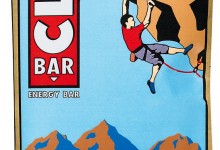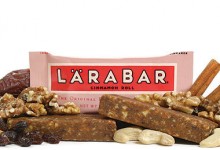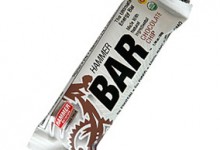Comparing Energy Bars
Understand different sources of energy for hiking and backpacking
Types of Energy Bars
Activity Bars
Similar to endurance bars, activity bars focus on prolonging energy. However, they tend to focus on all-day outdoor activities that require both energy and some meal-replacement nutritional features. Clif Bar is perhaps the most prevalent bar in this category. Outdoor bars, Clif Bar included, often focus on organic ingredients and have crunchier, more granola, textures. Activity bars are the best energy sources while backpacking and hiking.
Meal Replacement Bars
Also known as weight-loss bars, meal replacement bars are designed more for dieting and weight loss rather than a quick burst of energy during hiking or backpacking. They are meant to provide the complete nutrition of a lunch or breakfast and to fill you up. Nutribars, ProBars, and Balance bars are examples of energy bars designed to replace, rather than supplement, a meal. Each of these bars provides calories from carbs, proteins and fats in proportions that sate hunger. Each bar is typically over 300 calories, has at least 25 grams of protein and at least 30 grams of carbs and typically has 50% RDI of vitamins and minerals.
Protein Bars
Some energy bars, such as protein bars, are designed to help you gain muscle mass. These bars attempt to cram as much protein as possible for recovery from strenuous workouts or backpacking trips with high-mile days. Pure Protein bars and most Met-Rx bars fit into this category.
Endurance Bars
Endurance bars are primarily designed to be eaten before a long workout. They typically have a higher proportion of carbohydrates to provide complex, non-sugary energy that is digested over a long period of time. The most well-known endurance bars include PowerBar and Honey Stinger Bars.
Organic Bars
There are a new wave of energy bars that focus largely on providing energy in as natural a method as possible. Organic bars reject artificial sweeteners and inserted protein, preferring to have a compact load of simple ingredients. Larabar is particularly popular, with an ingredient list that typically includes only a few items and never adds protein, gluten or soy.
Steps to Compare Energy Bars
- Carbohydrates. Carbohydrates are the main fuel source for the muscles and brain. Carbohydrates are pure energy and get used up by your activity. If you are backpacking or participating in other strenuous activities, you will want an energy bar in the high carbohydrate range, around 40 grams.
- Protein. This important nutrient provides the high amount of energy you need while exercising and keeps you feeling full longer. Energy bars that are high in protein are great snacks when hiking or partaking other activities that aren’t extremely intense.Nine grams of protein is high, but you can easily find ones well over 20.
- Calorie count. Calories are units of energy that will result in sustained energy throughout your backpacking trip. Although not the healthy way to go for thru-hiking and day-to-day activities, if you are going on a moderate-length backpacking trip, read our All About: Food & Nutrition article to learn how to optimize your backpacking food by maximizing it’s caloric density.
- Price tag. Once you’ve narrowed your search down to a few different bars, the price may be a deciding factor in your final decision. The price of energy bars can get steep, so if you are interested in saving money compare its nutritional content to its cost.
- Taste test. Bad tasting energy bars isn’t an uncommon occurrence in the field of energy bars. With more nutrients sometimes comes a less appealing taste. Even if an energy bar is slightly more expensive or nutritional than another, you may find the taste much more bearable.
Leading Energy Bar Comparison
Bear Valley Pemmican, Carob-Cocoa
Size: 106 g
Calories: 440
Fat: 12 g
Carbs: 68 g
Price: $1.50
mealpack.com
Clif Bar, Chocolate Chip
Size: 68 g
Calories: 240; from fat: 45
Fat: 5 g
Carbs: 44 g
Price: $1.45
mealpack.com
Engage Bar, Fuel (Chia Seed, Chocolate, Almond)
Size: 45 g
Calories: 205; from fat: 108
Fat: 12 g
Carbs: 17 g
Price: $2.99
engagebars.com
ProBar, Old School PB&J
Size: 85 g
Calories: 370; from fat: 150
Fat: 17 g
Carbs: 48 g
Price: $3.30
theprobar.com
PowerBar Triple Threat, Caramel Peanut Fusion
Size: 55g
Calories: 230; from fat: 70
Fat: 9 g
Carbs: 30 g
Price: $1.60
powerbar.com
Larabar, Cinnamon Roll
Size: 51 g
Calories: 240; from fat: 110
Fat: 12 g
Carbs: 30 g
Price: $1.65
larabar.com
Hammer Bar, Chocolate Chip
Size: 50 g
Calories: 220; from fat: 80
Fat: 9 g
Carbs: 25 g
Price: $2.50
hammernutrition.com
Additional Resources
- ConsumerSearch – Energy Bar Comparison








